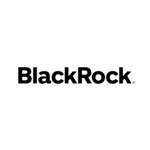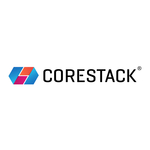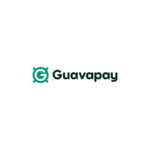Record Mortgage Volumes Push Total Consumer Debt to $2.15 Trillion
Continued inflation rises could impact debt levels and insolvencies
TORONTO, Aug. 31, 2021 (GLOBE NEWSWIRE) — New mortgage volumes climbed to over 410k during Q2, the highest ever volume recorded in a single quarter. This is a 60.2 per cent increase compared to the same period in 2020, according to Equifax Canada’s most recent consumer credit trends and insights report. Soaring home prices have also increased the average loan amount for new mortgages to over $355k, a 22.2 per cent increase from Q2 2020.
New mortgage growth has been strong across the country, but B.C. saw an exceptional increase in new mortgage volume during the second quarter with a year-over-year increase of 85.7 per cent. Apart from a strong housing market, seasonality and refinancing also played a big role in the new mortgage growth this quarter. High mortgage growth and low interest rates have helped Home Equity Lines of Credit (HELOCs) rebound. New HELOC volume increased by 56.7 per cent when compared to Q2 2020 — the highest it has been in the last ten years.
Variable Rate Home Equity Lines of Credit and Mortgages May be Cause for Concern
“The HELOC trend is worrisome as often the payments are tied to a variable interest rate,” said Rebecca Oakes, AVP of Advanced Analytics at Equifax Canada. “In 2018 when interest rates went up, we saw a drop in credit card payments, especially among consumers with a HELOC. It also led to higher bankruptcies among older consumers with HELOCs.”
Another concerning trend Oakes points to is the amount of mortgage debt being taken by consumers with lower credit scores. These consumers form a small percentage of all new mortgages (10 per cent), but their average loan amount has increased at the same rate as consumers with higher credit scores. With uncertain times due to the pandemic still ahead, these consumers could find themselves less equipped to manage future additional financial stress. Adding to the concern, according to Oakes, is the rate of inflation, up 3.7 per cent in the last 12 months, which is the highest annual increase since May 2011.
“Prices for consumer goods have risen and if the inflation trend continues, there is potential for an earlier-than-planned interest rate increase to curb this,” said Oakes. “With many consumers now heavily leveraged and the potential for increases on variable rate mortgage and HELOCs, consumers may find themselves not in a position to pay back their debt obligations if interest rates rise. This can lead to higher insolvencies.”
Total Consumer Debt Climbs Higher
Driven by considerable mortgage growth, overall consumer debt now stands at $2.15 trillion, up 3.0 per cent from last quarter and up 7.5 per cent from Q2 2020. On an individual basis the average consumer debt (excluding mortgages) is $20,640, a drop of 1.6 per cent when compared to Q2 2020, but an increase of 1.0 per cent versus Q1. Lower average debt is consistent with all risk segments except for consumers with higher credit scores. The average non-mortgage debt per consumer is up by 1.0 per cent from last year for this group, driven by increased demand for credit cards and loans.
Adding to the overall increase in consumer debt, volumes for new auto and installment loans are returning to pre-pandemic levels. When compared to the lows of Q2 2020, they show a 47.2 per cent (new auto) and 19.5 per cent (installment loan) increase in new volume this quarter.
New credit card growth is also picking up pace, doubling the volume seen a year ago when demand was at its lowest. Quarter over quarter new card volume increased by 2.8 per cent, but has yet to reach pre-pandemic levels. The average credit limit assigned to new cards is also increasing, up 4.4 per cent when compared to the same time period last year.
Delinquencies Continue to Decline
Despite deferral programs ending, delinquency rates dropped from Q1 2021. Government support and increased disposable income are still helping consumers pay off their debts and improve their credit score. The average Equifax credit score for consumers increased by 12 points in the last two years.
The 90+ day delinquency rates for both mortgage and non-mortgage products continued to decrease this quarter, down by 32.6 per cent and 28.6 per cent respectively, when compared to Q2 2020
“Lower delinquencies are a good thing, however, insolvency volumes are higher this quarter than the lows of last year,” said Oakes. “We may see surprise insolvencies occur where consumers with no delinquency history on file and a decent credit score end up filing without warning.”
Consumer proposals have outgrown personal bankruptcies as the preferred debt relief solution over the last few years. A consumer proposal is a legal agreement between a consumer and creditor, where the creditor agrees to allow the consumer to pay off a percentage of their debt at a reduced rate over a specific time period without losing their assets. This trend was even more visible after the drop in overall insolvencies in Q2 2020 when consumer proposals started to rise, even when delinquencies were low.
“The consumer credit market continues to recover from the effects of the pandemic, with government support playing an important role in improving Canadians’ credit health,” concluded Oakes. “We’ll continue to monitor how increases in inflation and decreases in government incentives impact consumer debt levels and insolvencies over the coming months.”
Debt (excluding mortgages) & Delinquency Rates
| Age | Average Debt (Q2 2021) |
Average Debt Change Year-over-Year (Q2 2021 vs. Q2 2020) |
Delinquency Rate (Q2 2021) |
Delinquency Rate Change Year-over-Year (Q2 2021 vs. Q2 2020) |
|||
| 18-25 | $8,401 | -1.04% | 1.26% | -26.84% | |||
| 26-35 | $16,540 | 0.75% | 1.38% | -24.58% | |||
| 36-45 | $24,549 | -0.57% | 1.08% | -30.14% | |||
| 46-55 | $30,887 | -1.53% | 0.81% | -31.50% | |||
| 56-65 | $26,086 | -2.98% | 0.72% | -29.72% | |||
| 65+ | $14,539 | -2.46% | 0.83% | -28.31% | |||
| Canada | $20,640 | -1.59% | 0.95% | -28.60% | |||
Major City Analysis – Debt (excluding mortgages) & Delinquency Rates
| City | Average Debt (Q2 2021) |
Average Debt Change Year-over-Year (Q2 2021 vs. Q2 2020) |
Delinquency Rate (Q2 2021) |
Delinquency Rate Change Year-over-Year (Q2 2021 vs. Q2 2020) |
||
| Calgary | $25,346 | -2.47% | 1.20% | -24.34% | ||
| Edmonton | $24,633 | -2.55% | 1.47% | -20.16% | ||
| Halifax | $21,130 | -3.38% | 1.11% | -26.91% | ||
| Montreal | $15,695 | 0.88% | 0.83% | -41.48% | ||
| Ottawa | $18,225 | -2.44% | 0.86% | -27.24% | ||
| Toronto | $19,337 | 0.76% | 1.16% | -25.35% | ||
| Vancouver | $21,909 | -0.46% | 0.73% | -26.14% | ||
| St. John’s | $23,983 | -0.57% | 1.30% | -22.44% | ||
| Fort McMurray | $38,014 | -0.28% | 1.66% | -21.34% | ||
Province Analysis – Debt (excluding mortgages) & Delinquency Rates
| Province | Average Debt (Q2 2021) |
Average Debt Change Year-over-Year (Q2 2021 vs. Q2 2020) |
Delinquency Rate (Q2 2021) |
Delinquency Rate Change Year-over-Year (Q2 2021 vs. Q2 2020) |
||
| Ontario | $20,508 | -1.25% | 0.91% | -27.73% | ||
| Quebec | $17,927 | -1.23% | 0.62% | -43.89% | ||
| Nova Scotia | $20,954 | -2.38% | 1.27% | -27.08% | ||
| New Brunswick | $22,356 | -2.71% | 1.39% | -23.01% | ||
| PEI | $21,995 | 0.13% | 0.86% | -28.98% | ||
| Newfoundland | $23,135 | 0.20% | 1.34% | -23.95% | ||
| Eastern Region | $21,926 | -1.76% | 1.30% | -25.12% | ||
| Alberta | $25,524 | -2.31% | 1.36% | -21.14% | ||
| Manitoba | $16,938 | -3.29% | 1.10% | -28.11% | ||
| Saskatchewan | $22,716 | -1.94% | 1.26% | -23.15% | ||
| British Columbia | $21,308 | -1.16% | 0.84% | -25.32% | ||
| Western Region | $22,490 | -1.91% | 1.11% | -23.46% | ||
| Canada | $20,640 | -1.59% | 0.95% | -28.60% | ||
* Based on Equifax data for Q2 2021
About Equifax
At Equifax (NYSE: EFX), we believe knowledge drives progress. As a global data, analytics, and technology company, we play an essential role in the global economy by helping financial institutions, companies, employees, and government agencies make critical decisions with greater confidence. Our unique blend of differentiated data, analytics, and cloud technology drives insights to power decisions to move people forward. Headquartered in Atlanta and supported by more than 11,000 employees worldwide, Equifax operates or has investments in 25 countries in North America, Central and South America, Europe, and the Asia Pacific region. For more information, visit Equifax.ca and follow the company’s news on LinkedIn and Twitter.
| Contact: | |
| Andrew Findlater | Heather Aggarwal |
| SELECT Public Relations | Equifax Canada Media Relations |
| [email protected] | [email protected] |
| (647) 444-1197 | |



































